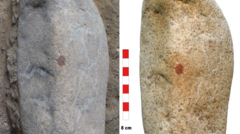A recent study suggests that bedbugs have relied on humans for survival for over 245,000 years, thriving as urban pests with a unique dependence on human settlements.
Early Bedbugs: An Unlikely Co-Habitation with Humans

Early Bedbugs: An Unlikely Co-Habitation with Humans
Significant Findings Reveal Bedbugs as Humanity's First Urban Pests
In a fascinating exploration of the relationship between humans and bedbugs, new research published in Biology Letters sheds light on how these notorious insects have coexisted with humans for an astonishing 245,000 years. Once reliant on the blood of cave-dwelling bats, bedbugs shifted their diet to early humans, beginning the longest relationship between a pest and its host in history.
These pesky insects are specific in their devotion, choosing human blood exclusively to survive, unlike other pests that may feast on a variety of animals. Interestingly, bedbugs are not known to transmit diseases, maintaining a somewhat harmless but frustrating presence for their hosts.
Professor Warren Booth of Virginia Tech, who is a lead author of the study, points out that the bedbug population underwent a significant increase approximately 13,000 years ago, coinciding with the rise of human settlements and urban living. This transition followed a period of decline during the nomadic phase of early human existence when the insects struggled to find hosts.
In detailing this enduring relationship, the research invites further inquiry into the evolution of pests and their adaptations to human environments, as bedbugs have uniquely capitalized on the stability provided by urbanization. As cities continue to grow, the bedbug's presence serves as a reminder of ancient interactions that persist into modern times.






















